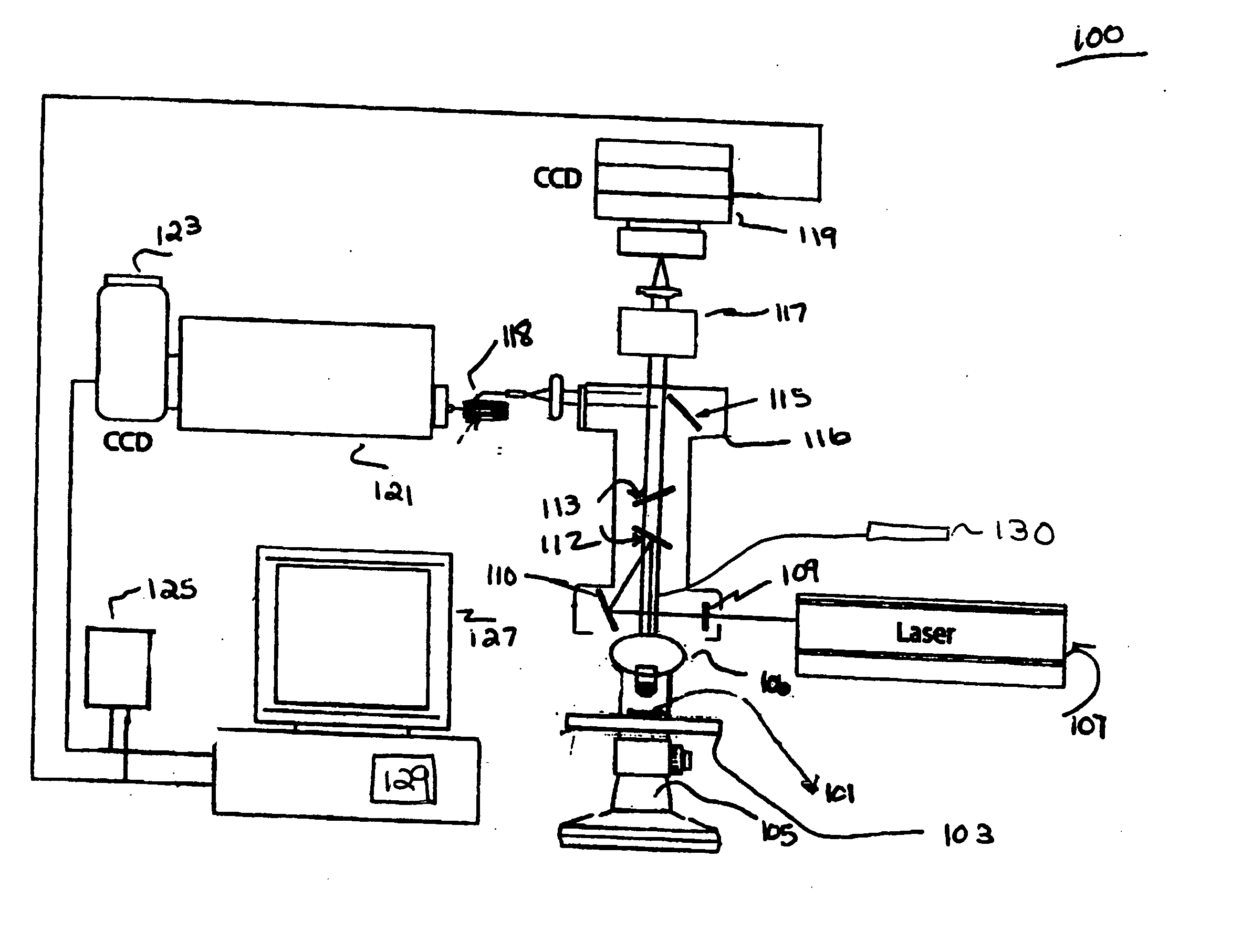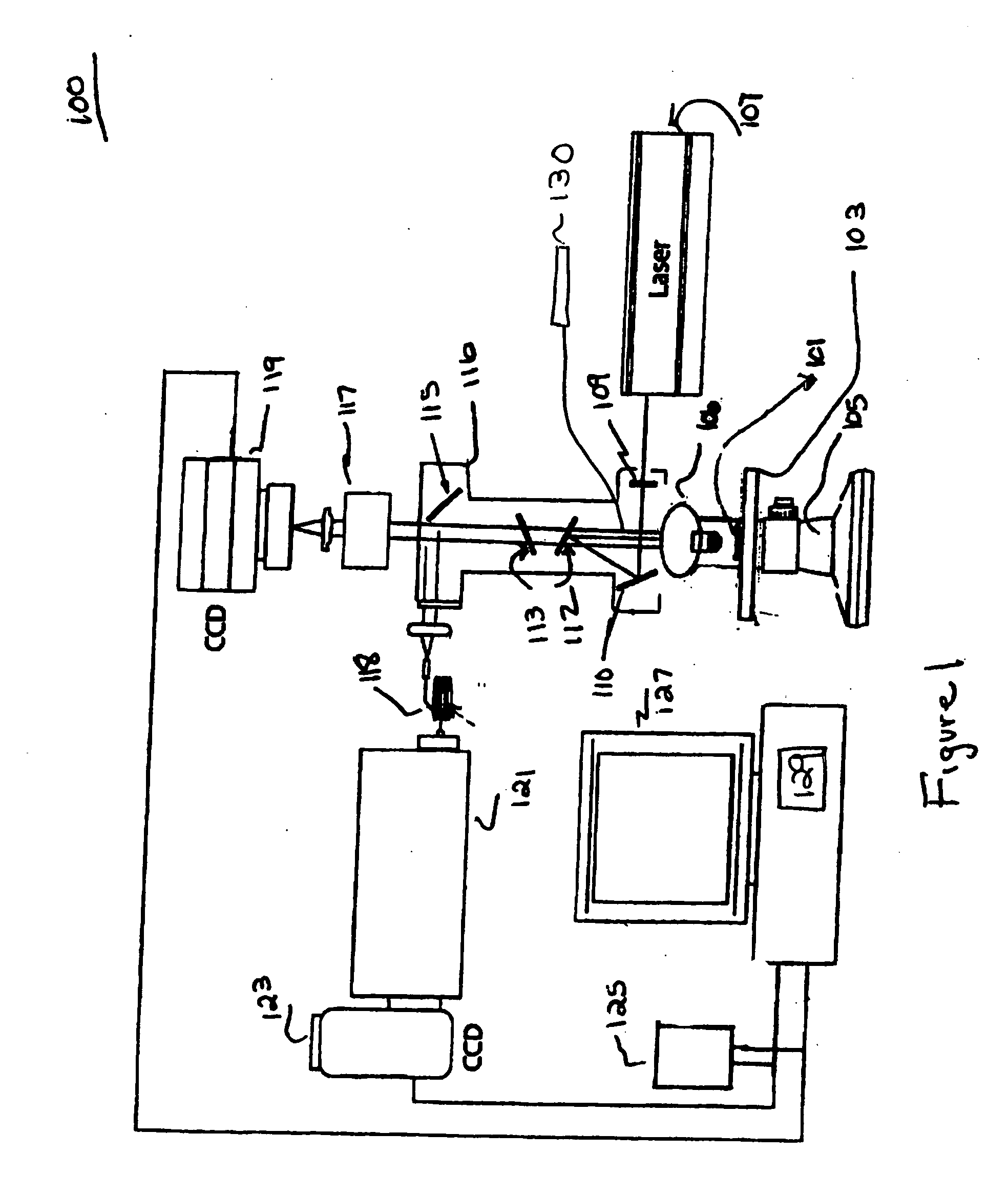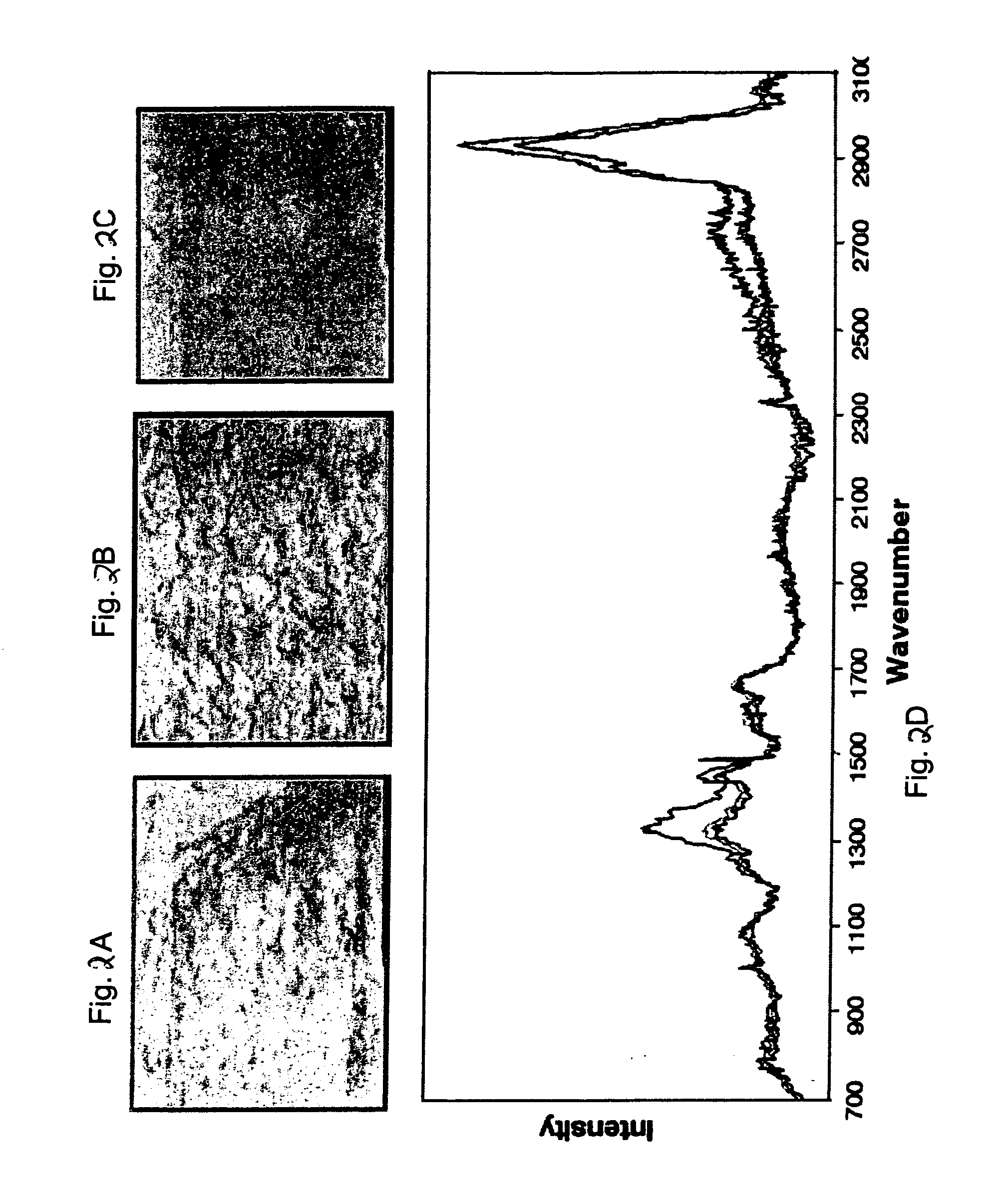Spectral imaging of biofilms
a biofilm and raman spectroscopy technology, applied in the field of raman spectroscopy identification of biofilms, can solve the problem that biofilms are more difficult to get rid, and achieve the effect of reducing the number of biofilms
- Summary
- Abstract
- Description
- Claims
- Application Information
AI Technical Summary
Benefits of technology
Problems solved by technology
Method used
Image
Examples
examples
[0062] The subject matter is now described with reference to the following Examples. These Examples are provided for the purpose of illustration only, and the subject matter is not limited to these Examples, but rather encompasses all variations which are evident as a result of the teaching provided herein.
Imaging of Planktonic and Sessile Pseudomonas aeruginosa Cells
[0063] The experiments described in this Example involved imaging of the planktonic and sessile (biofilm) forms of Pseudomonas aeruginosa. The planktonic and sessile organisms were deposited on aluminum-coated slides and prepared the samples for imaging.
[0064] Planktonic cultures were filtered and then printed to a coupon directly and in dilutions of 1:10 and 1:100 (corresponding to FIGS. 2A, 2B, and 2C, respectively). Biofilm cultures were directly grown on slides and air-dried. The samples were characterized by dispersive Raman spectroscopy. Multiple spectra were taken of all forms and dilutions. After enhancing t...
PUM
 Login to View More
Login to View More Abstract
Description
Claims
Application Information
 Login to View More
Login to View More - R&D
- Intellectual Property
- Life Sciences
- Materials
- Tech Scout
- Unparalleled Data Quality
- Higher Quality Content
- 60% Fewer Hallucinations
Browse by: Latest US Patents, China's latest patents, Technical Efficacy Thesaurus, Application Domain, Technology Topic, Popular Technical Reports.
© 2025 PatSnap. All rights reserved.Legal|Privacy policy|Modern Slavery Act Transparency Statement|Sitemap|About US| Contact US: help@patsnap.com



